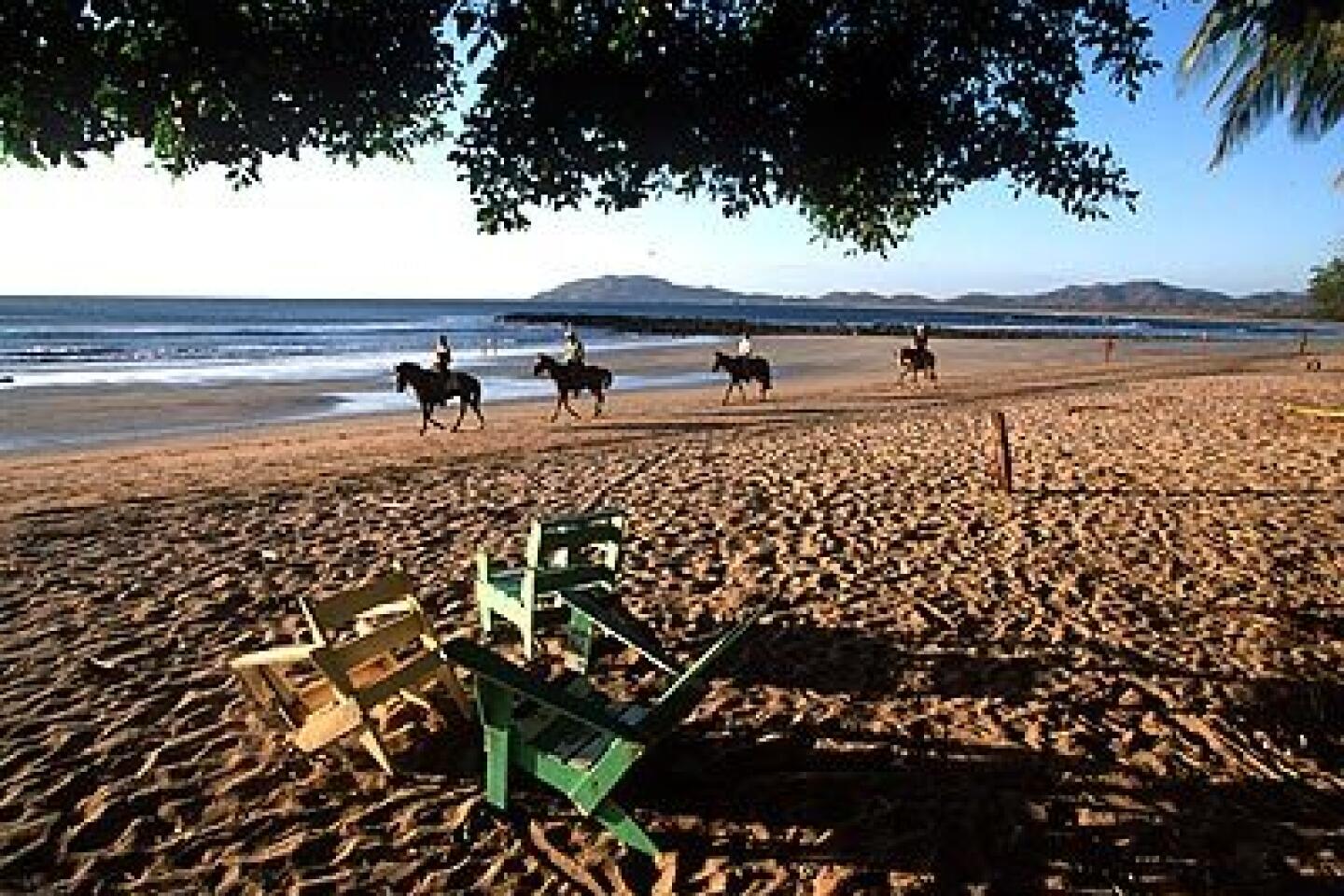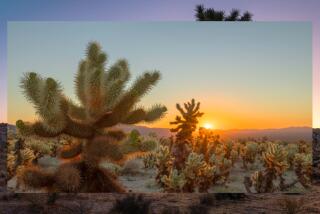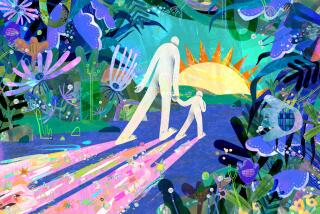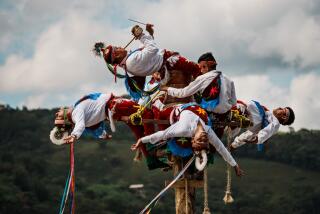Costa Rica just for kids
“Mommy and Daddy, come quickly! I hear rumbling!”
My husband, Ken Stern, and I had left our 5-year-old son, Jack, coloring in front of the floor-to-ceiling window of our hotel room while we washed up for dinner. Ken and I had apparently missed an explosion of the Arenal volcano, just six miles away. By the time we scrambled into the room, we could see only a trail of smoke streaming from its crater.
Earlier that February day, the three of us had been even closer to the tempest, on foot navigating the lava flows left by two major eruptions of Arenal, one in 1968 and the other in 1993. Frequent small upheavals allow the volcano to vent, supposedly minimizing the risk of dangerous outbursts for visitors like us who hope to witness this natural wonder in action.
On a 90-minute hike with a local tour guide, Arenal reminded us of its presence at least a dozen times. Depending on the intensity of the outburst, it sounded like a bubbling pot, galloping horses or a fireworks display. Jack said the rough terrain reminded him of the forest moon of Endor, scene of a climactic battle in the “Star Wars” film “Return of the Jedi.”
By day we could see rock and lava pouring down the sides. At night, the blasts were visible as bursts of orange against a darkened sky.
We had come to La Fortuna, the town closest to Arenal, as part of a 12-day family trip. Past journeys with Jack had taken us to some far-flung destinations, including Malaysia, Hong Kong and India. Although we enjoyed these trips, Jack, understandably, had absorbed very little. Now that he was in kindergarten, our goal was to balance our yen for the exotic with activities that would interest him.
Costa Rica offered plenty of opportunities to do both. The Central American country has nearly 30 national parks and reserves, including wet and dry jungle, dramatic waterfalls, hot springs and pristine beaches.
It also turned out to be a place where a kid could be a kid. During our visit, Jack came face to face with an iguana, followed the trail of leaf-cutter ants and learned to bite open a ripe red coffee berry and scoop out the beans inside, an experience he described as “awesome.”
There was no particular reason to stay clean or even quiet, except to hear the chorus of birds and crickets or to keep from frightening the squirrel monkeys. When we weren’t sleeping, we spent most of our time outdoors.
A child-friendly country
Our itinerary included three segments: the volcano at Arenal, a beach resort in Tamarindo and another beach and national park in Manuel Antonio.
Everywhere we traveled in Costa Rica the local people went out of their way to accommodate us and our child. Our hotels supplied an extra bed at no additional charge. The driver of every cab or minivan we took stopped to point out things that would interest Jack, from the lava flows and the white-faced, raccoon-like coatis in La Fortuna to the grazing cows we saw on the way there.
Three nights and two full days in each of our destinations seemed about right. In hindsight, we would have skipped the three nights we spent in San José, which, despite the entertaining Children’s Museum, seemed noisy, polluted and charmless.
On our one full day in San José, Costa Rica’s capital, we hired a taxi ($100 for the day) to take us on an excursion to La Paz Waterfall Gardens near Varablanca, about an hour northwest of San José. This private reserve was our first experience with the sort of soft travel adventure that makes Costa Rica accessible even to young children.
The path to several spectacular waterfalls took us not over rocks and muddy paths, as one might expect, but up and down sturdy metal and concrete staircases. Jack seemed fascinated with the rushing current and kept asking where he could go swimming, but there was no safe spot for him to take a dip.
At the end of the hike, a caretaker radioed the main building for a shuttle bus to take us back there. After a buffet lunch on the terrace, we explored the magnificent butterfly garden below, where electric blue morpho butterflies landed on our sleeves. Jack learned to look for the plates of mashed banana where they congregated.
The ease of visiting this place contrasted starkly with the overall difficulty of getting around Costa Rica. The mountains, lakes, volcanoes and rain forests that contribute to Costa Rica’s beauty are natural barriers to travel.
In various spots the roads are unpaved or in disrepair. For example, the 87-mile trip from San José to La Fortuna, which would take less than 90 minutes on a California freeway (assuming little traffic), took 3 1/2 hours on the winding, potholed mountain road.
We traveled that route by Interbus, one of two scheduled services that pick up tourists at their hotels and take them by minivan directly to the next destination. (Gray Line runs a comparable service.)
On this trip and others, in vehicles that had no seat belts in the back, we secured Jack’s harness-style car seat by stringing together two flexible laundry lines made of braided rubber tubing. (We used the Flexoline, available for $8.75 from https://www.goinginstyle.com .) This required a bit of jury-rigging: threading the Flexoline through the slits on the back of the car seat where the seat belt would usually go, wrapping it around the back of the van seat and hooking it through the harness before we buckled Jack into the car seat.
The volcano in the window
The scenic ride took us north and west of San José through Costa Rica’s fertile agricultural valley. We passed coffee and sugar cane plantations and pineapple, avocado, lemon and papaya.
As we approached La Fortuna, the air grew cool and moist. Our hotel, the Arenal Lodge, was about seven miles outside town, on the road to the volcano. Its steep, rocky driveway, which is more than a mile long, is best traveled in a four-wheel drive.
Our chalet had a direct view of the volcano, although it was sometimes obscured by clouds, especially in the morning. Jack has never met a hotel he didn’t like, but he still refers to this one as his favorite. I assume it has much to do with the volcano view.
Even people who travel to La Fortuna in a rental car seem to use it little once they get here. That’s because many of the activities are best done by booking a tour package that includes transportation. Popular trips for families with slightly older children are whitewater rafting and canopy tours, in which visitors strap on a harness and swing by pulley-operated cables to various platforms at the highest branches of the jungle.
We chose tours that were age-appropriate for Jack. After seeing the waterfalls at La Paz, we found the tour to the falls at La Fortuna somewhat less impressive, but the children in our group had a blast swimming in the natural pools below, something that would be too dangerous at La Paz.
Although you can hike on the lava flows without a guide, we felt safer with one, and Bernardo Perez Ramirez, from Jacamar Naturalist Tours, pointed out flora and fauna along the way that we wouldn’t have noticed otherwise.
Bernardo was also a huge asset another day when we took a morning tour of Arenal’s hanging bridges. They are in a relatively new private reserve (the turnoff is on the road to the volcano just before the Arenal Lodge driveway) that consists of six hanging suspension bridges rising above the jungle canopy and connecting with a concrete and brick path through the lush rain forest. The bridges provide an excellent vantage point for jungle watching. The chain-link fence on either side of each bridge is about 50 inches high, so there is little chance of youngsters slipping through, and the 1.9-mile hike is easy enough for kids accustomed to walking.
This path was one of the most beautiful we took in Costa Rica. We heard the plaintive wail of the howler monkey and the distinctive squeak of the blue frog, both of which eluded us. But with Bernardo’s help we followed the call of the toucan and spotted two varieties, one yellow and one red.
Adults were impressed with the many varieties of heliconia plants, the flowering ginger and the owl butterfly, so named for the large spot on each wing that looks like an eye and helps ward off predators. The kids seemed intrigued with the prehistoric ferns, especially when Bernardo told them they existed in the Jurassic period.
We went independently to Tabacón Hot Springs, which has nine swimming pools and six river pools where visitors can soak in water naturally heated by the volcano. After a morning of hiking, I enjoyed a natural massage in one of the river pools, where water comes crashing down over a rock.
Jack preferred two more conventional kiddie pools where the water was slightly cooler. But the crowds and lack of shade there deterred us from spending more than a few hours in this otherwise tranquil spot.
An oasis for families
After three days in the rain forest, we headed west and a little south to Tamarindo, a surfer’s paradise on the northwest Pacific coast, named for the tamarind trees that grow there.
The four-hour drive, again on Interbus, took us through some rough mountain terrain where four-wheel drive was necessary and into Guanacaste, Costa Rica’s driest region. Cactus plants replaced the lush tropical vegetation, and we closed the bus windows to shut out the dust.
Tamarindo is a honky-tonk tourist town, but we found an oasis at Capitán Suizo, a small resort on the uncrowded southern end of the beach where the surf is gentle enough for young swimmers and the soft volcanic sand is perfect for making mud pies. (Surfers gravitate toward the northern end of the beach, where the waves are more robust.)
Our guidebooks billed Capitán Suizo as a family-friendly hotel, and during our visit, which coincided with schools’ winter break, Jack found plenty of company. The resort was alive with the sound of squealing children jumping off a rope swing into the free-form pool. We left the hotel only for meals.
To avoid a seven-hour car trip on rough roads to our next destination, we flew back to San José and then drove a rental car to Quepos, the town closest to Manuel Antonio National Park on the central Pacific coast, our next stop.
Manuel Antonio, with 1,700 acres and several beautiful beaches, is Costa Rica’s most heavily visited national park; on a busy day it gets as many as 150 people, a park ranger told us. After our time up north we were disappointed with the wildlife at Manuel Antonio. Visitors seem to have taken their toll on flora and fauna, and the hikes were unrewarding. We saw none of the park’s famous squirrel monkeys along these well-trodden paths, and hordes of bird-watchers seemed to have scared away any winged creatures that could readily escape.
The chief attraction of Manuel Antonio is the beaches within the park, surrounded by jungle. We spent two idyllic mornings body surfing and sitting under the shady mangrove trees on Playa Espadilla Sur, about a quarter of a mile from the park entrance.
For spotting animals, we were better off on the balcony of our hotel, the Si Como No, where we observed many varieties of birds and a family of monkeys. Like other hotels and restaurants in the area, all of them outside the park, it was magnificently landscaped and integrated into the natural vegetation.
On the plane coming home, Jack drew a picture of a volcano, surrounded by stars and a crescent moon, spewing molten lava, reflected with abundant streaks of red and orange crayon. I had already forgotten the new moon and the stars framing the volcano at dusk. For him, they had clearly made a lasting impression.
Deborah L. Jacobs, a writer in New York, is working on a book about traveling with children.
More to Read
Sign up for The Wild
We’ll help you find the best places to hike, bike and run, as well as the perfect silent spots for meditation and yoga.
You may occasionally receive promotional content from the Los Angeles Times.







